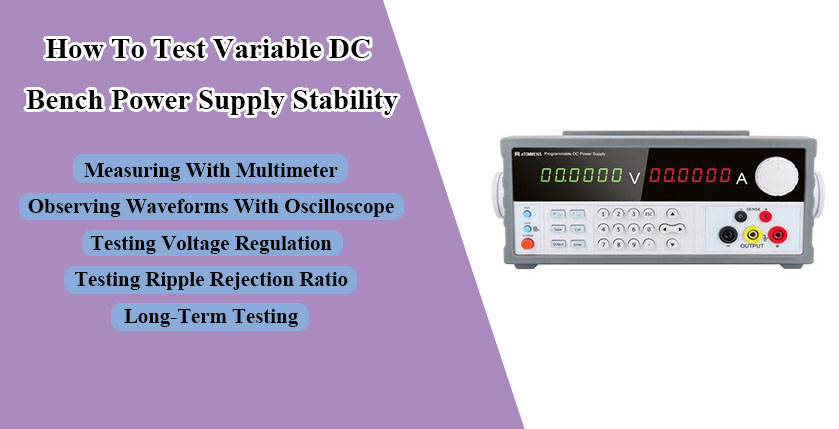A stable Variable DC Power Supply is crucial for precise electronics testing and experimentation. Output voltage fluctuations can significantly impact test accuracy. The variable bench power supply offer adjustable voltage and current, making them versatile tools for various applications. However, assessing their stability is essential to ensure reliable performance.
Importance Of Testing Benchtop Variable DC Power Supply Stability
Verifying the stability of benchtop power supplies is paramount for critical applications that demand precise DC power output. Unstable output can lead to inaccurate measurements, unreliable test results, and potential damage to sensitive electronic components. Testing the bench power supply’s stability ensures that the voltage remains within specified tolerances under varying load conditions and input fluctuations.
A stable DC bench power supply variable is essential for applications such as circuit debugging, component characterization, and calibrating test equipment. By regularly assessing the stability, engineers can identify potential issues, perform preventive maintenance, and ensure the integrity of their test setups, ultimately enhancing the quality and reliability of their work.
Best Ways To Test Bench DC Variable Power Supply Stability

Measuring With A Multimeter
Use a multimeter to measure the output voltage of the variable voltage power supply under different load conditions. If the output voltage fluctuates only slightly within the acceptable range, it indicates that the voltage is relatively stable.
Observing Waveforms With An Oscilloscope
Connect the oscilloscope probe to the output of the DC variable power supply and observe the waveform displayed on the oscilloscope. If the waveform is smooth and undistorted, it indicates that the output voltage is relatively stable. Conversely, if there are significant fluctuations or distortions in the waveform, it suggests that the output voltage is unstable.
Testing Voltage Regulation
Voltage regulation characterizes the stability of the output voltage when the input voltage changes. To test this, measure the output voltage at different input voltages and calculate the voltage regulation. The smaller the voltage regulation, the more stable the output voltage.
Testing Ripple Rejection Ratio
The ripple rejection ratio reflects the ability of a bench DC power supply to suppress AC ripple at the input. It can be measured by comparing the ripple voltage at the input and output. The larger the ripple rejection ratio, the smoother and more stable the output voltage.
Long-Term Testing
Monitor the bench top power supply over an extended period, observing changes in its output voltage under varying environmental temperatures and load conditions. If the changes are minimal, it indicates that the output voltage is relatively stable.
Conclusion
Testing the stability of a DC variable bench power supply is critical for accurate electronics testing and experimentation. Stability ensures precise voltage output, which is essential for applications such as circuit debugging, component characterization, and calibrating test equipment. Methods to test stability include using a multimeter to measure voltage fluctuations, observing waveforms with an oscilloscope, testing voltage regulation, evaluating ripple rejection ratio, and conducting long-term monitoring under varying conditions.
ETOMMENS Variable Bench Power Supply excels in these aspects, offering reliable performance with adjustable voltage and current, making it a versatile tool for a wide range of applications. Its superior stability ensures accurate measurements, reliable test results, and protection for sensitive electronic components, thereby enhancing the quality and reliability of your work.
